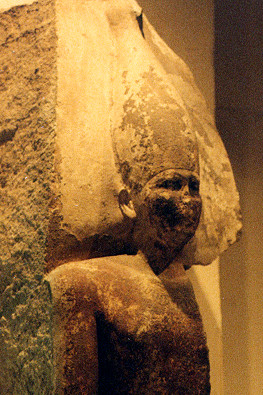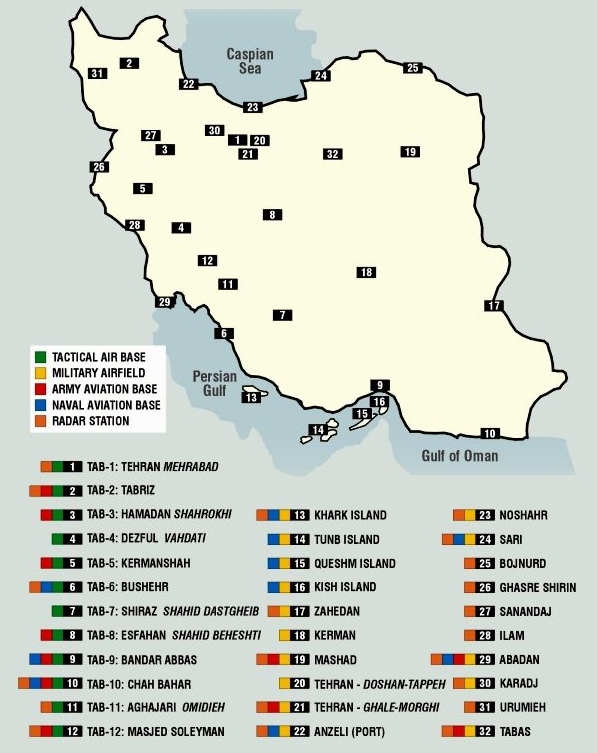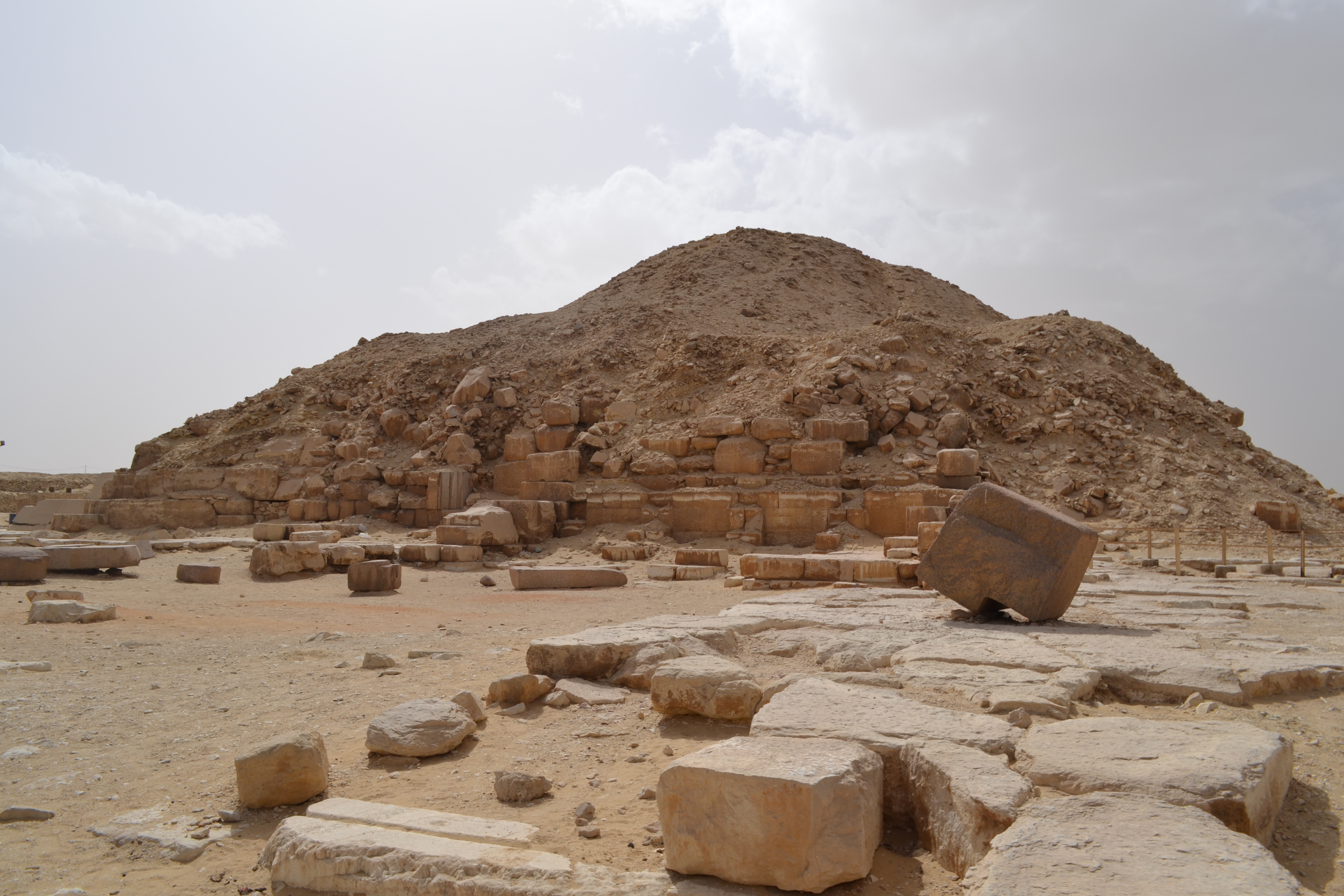|
Zawyet El Aryan
Zawyet El Aryan () is a town in the Giza Governorate, located between Giza and Abusir. To the west of the town, just in the desert area, is a necropolis, referred to by the same name. Almost directly east across the Nile is Memphis. In Zawyet El Aryan, there are two pyramid complexes and five mastaba cemeteries. Pyramids Layer Pyramid The Layer Pyramid was built in the Third Dynasty, probably during the reign of Khaba. The pyramid was meant to be a step pyramid of possibly five to seven steps. No casing stones have been found, suggesting that the pyramid was never finished. The layout of the underground chambers resembles that of the Buried Pyramid. A corridor leading into the interior has thirty-two side chambers meant for storage of the burial equipment.Verner, Miroslav: ''The Pyramids: The Mystery, Culture, and Science of Egypt's Great Monuments''. Grove Press. 2001 (1997). , p. 270.Rainer Stadelmann: ''Die ägyptischen Pyramiden. Vom Ziegelbau zum Weltwunder'' (= ''Ku ... [...More Info...] [...Related Items...] OR: [Wikipedia] [Google] [Baidu] |
Governorates Of Egypt
Egypt is administratively organized under a dual system that may consist of either two or three tiers, with further subdivisions occasionally resulting in an additional layer. It follows a centralized system of local government, officially termed local administration, as it functions as a part of the executive branch of the government. Overview Egyptian law delineates the units of local governance as governorates, centers, cities, districts, and villages, each possessing legal personality. The legal framework establishes a dual system of local administration that alternates between a two-tier and a three-tier structure, depending on the characteristics of the governorate. At the top of the hierarchy are 27 governorates (singular: ', plural: '). Each governorate has a capital, typically its largest city, and is headed by a governor, appointed by the President of Egypt, serving at the president’s discretion. Governors hold the civilian rank of minister and report directl ... [...More Info...] [...Related Items...] OR: [Wikipedia] [Google] [Baidu] |
Fourth Dynasty Of Egypt
The Fourth Dynasty of ancient Egypt (notated Dynasty IV) is characterized as a "golden age" of the Old Kingdom of Egypt. Dynasty IV lasted from to c. 2498 BC. It was a time of peace and prosperity as well as one during which trade with other countries is officially documented. The Fourth Dynasty heralded the height of the pyramid-building age. The peaceful rule of the Third Dynasty of Egypt, Third Dynasty allowed artistic expressions to flourish. Building experiments done by King Sneferu led to the evolution of mastaba tombs into the smooth sided pyramids like those seen on the Giza Plateau. No other period in Egyptian history equaled the accomplishments achieved during the Fourth Dynasty.Egypt: Land and Lives of the Pharaohs Revealed, (2005), pp. 80–90, Global Book Publishing: Australia Rulers Summary of Listed Kings Sneferu Sneferu, lauded as "Bringer of Beauty", "Master of All Justice", and "Ruler of Lower and Upper Nile", was the first pharaoh of the fourt ... [...More Info...] [...Related Items...] OR: [Wikipedia] [Google] [Baidu] |
Military Base
A military base is a facility directly owned and operated by or for the military or one of its branches that shelters military equipment and personnel, and facilitates training and operations. A military base always provides accommodations for one or more units, but it may also be used as a command center, training ground or proving ground. In most cases, military bases rely on outside help to operate. However, certain complex bases are able to endure on their own for long periods because they are able to provide food, drinking water, and other necessities for their inhabitants while under siege. Bases for military aviation are called air bases. Bases for military ships are called naval bases. Jurisdictional definition Military bases within the United States are considered federal property and are subject to federal law. Civilians (such as family members of military officers) living on military bases are generally subject to the civil and criminal laws of the stat ... [...More Info...] [...Related Items...] OR: [Wikipedia] [Google] [Baidu] |
Serekh
In Egyptian hieroglyphs, a serekh is a rectangular enclosure representing the niched or gated façade of a palace surmounted by (usually) the Horus falcon, indicating that the text enclosed is a royal name. The serekh was the earliest convention used to set apart the royal name in ancient Egyptian iconography, predating the later and better known cartouche by four dynasties and five to seven hundred years. Appearance A serekh was an ornamental vignette combining a view of a palace façade and a plan (top view) of the royal courtyard. The term ''serekh'' derives from the Egyptian word for "façade". Different serekhs on different types of object display countless variations of the façade decor in its complexity and detail. It seems that no strict artistic rules for the design of the serekh itself existed.Jürgen von Beckerath: ''Handbuch der ägyptischen Königsnamen''. Münchner Ägyptologische Studien. Bd. 49. Philipp von Zabern, Mainz 1999, , p. 7-9.Rolf Gundlach: ''Horus ... [...More Info...] [...Related Items...] OR: [Wikipedia] [Google] [Baidu] |
Marble
Marble is a metamorphic rock consisting of carbonate minerals (most commonly calcite (CaCO3) or Dolomite (mineral), dolomite (CaMg(CO3)2) that have recrystallized under the influence of heat and pressure. It has a crystalline texture, and is typically not Foliation (geology), foliated (Layered intrusion, layered), although there are exceptions. In geology, the term ''marble'' refers to metamorphosed limestone, but its use in stonemasonry more broadly encompasses unmetamorphosed limestone. The extraction of marble is performed by quarrying. Marble production is dominated by four countries: China, Italy, India and Spain, which account for almost half of world production of marble and decorative stone. Because of its high hardness and strong wear resistance, and because it will not be deformed by temperature, marble is often used in Marble sculpture, sculpture and construction. Etymology The word "marble" derives from the Ancient Greek (), from (), "crystalline rock, shin ... [...More Info...] [...Related Items...] OR: [Wikipedia] [Google] [Baidu] |
Mastaba
A mastaba ( , or ), also mastabah or mastabat) is a type of ancient Egyptian tomb in the form of a flat-roofed, rectangular structure with inward sloping sides, constructed out of mudbricks or limestone. These edifices marked the burial sites of many eminent Egyptians during Egypt's Early Dynastic Period and Old Kingdom. Non-royal use of mastabas continued for over a thousand years. The word ''mastaba'' comes from the Arabic word (maṣṭaba) "stone bench". The Ancient Egyptian name was pr- Djt, meaning "house of stability", " house of eternity", or "eternal house". History The afterlife was centralized in the religion of ancient Egyptians. Their architecture reflects this, most prominently by the enormous amounts of time and labor involved in building tombs. Ancient Egyptians believed that the needs from the world of the living would be continued in the afterlife; it was therefore necessary to build tombs that would fulfill them, and be sturdy enough to last for an eter ... [...More Info...] [...Related Items...] OR: [Wikipedia] [Google] [Baidu] |
Egypt (Roman Province)
Roman Egypt was an imperial province of the Roman Empire from 30 BC to AD 642. The province encompassed most of modern-day Egypt except for the Sinai Peninsula, Sinai. It was bordered by the provinces of Crete and Cyrenaica to the west and Judaea (Roman province), Judaea, later Arabia Petraea, to the East. Egypt was conquered by Roman forces in 30 BC and became a province of the new Roman Empire upon its formation in 27 BC. Egypt came to serve as a major producer of grain for the empire and had a highly developed urban economy. It was by far the wealthiest Roman province outside of Roman Italy, Italy. The population of Roman Egypt is unknown, although estimates vary from . Alexandria, its capital, was the largest port and second largest city of the Roman Empire. Three Roman legions garrisoned Egypt in the early Roman imperial period, with the garrison later reduced to two, alongside formations of the Roman army. The major town of each ''Nome (Egypt), nome'' ( ... [...More Info...] [...Related Items...] OR: [Wikipedia] [Google] [Baidu] |
Eighteenth Dynasty Of Egypt
The Eighteenth Dynasty of Egypt (notated Dynasty XVIII, alternatively 18th Dynasty or Dynasty 18) is classified as the first dynasty of the New Kingdom of Egypt, the era in which ancient Egypt achieved the peak of its power. The Eighteenth Dynasty spanned the period from 1550/1549 to 1292 BC. This dynasty is also known as the Thutmoside Dynasty for the four pharaohs named Thutmose. Several of Egypt's most famous pharaohs were from the Eighteenth Dynasty, including Tutankhamun. Other famous pharaohs of the dynasty include Hatshepsut (c. 1479 BC–1458 BC), the longest-reigning woman pharaoh of an indigenous dynasty, and Akhenaten (c. 1353–1336 BC), the "heretic pharaoh", with his Great Royal Wife, Nefertiti. The Eighteenth Dynasty is unique among Egyptian dynasties in that it had two Queen regnant, queens regnant, women who ruled as sole pharaoh: Hatshepsut and Neferneferuaten, usually identified as Nefertiti. History Early Dynasty XVIII Dynasty XVIII was founded by Ahmo ... [...More Info...] [...Related Items...] OR: [Wikipedia] [Google] [Baidu] |
Second Dynasty Of Egypt
The Second Dynasty of ancient Egypt (or Dynasty II, – ) is the latter of the two dynasties of the Early Dynastic Period of Egypt, Egyptian Archaic Period, when the seat of government was centred at Thinis. It is most known for its last ruler, Khasekhemwy, but is otherwise one of the most obscure periods in History of ancient Egypt, Egyptian history. Though archaeological evidence of the time is very scant, contrasting data from the First Dynasty of Egypt, First and Third Dynasty of Egypt, Third Dynasties indicates important institutional and economic developments during the Second Dynasty. Rulers For the first three pharaohs, sources are fairly close in agreement and the order is supported by an inscription on the statuette of Hetepdief, who served in the mortuary cults of these three kings. But the identity of the next few rulers is unclear. Surviving sources might be giving the Horus name or the Nebty name and the birth names of these rulers. They may also be entirely ... [...More Info...] [...Related Items...] OR: [Wikipedia] [Google] [Baidu] |
First Dynasty Of Egypt
The First Dynasty of ancient Egypt (Dynasty I) covers the first series of Egyptian kings to rule over a unified Egypt. It immediately follows the unification of Upper and Lower Egypt, by Menes, or Narmer, and marks the beginning of the Early Dynastic Period, when power was centered at Thinis. The date of this period is subject to scholarly debate about the Egyptian chronology. It falls within the early Bronze Age and is variously estimated to have begun anywhere between the 34th and the 30th centuriesBC. In a 2013 study based on radiocarbon dates, the accession of Hor-Aha, the second king of the First Dynasty, was placed between 3111 and 3045 BC with 68% confidence, and between 3218 and 3035 with 95% confidence. The same study placed the accession of Den, the sixth king of the dynasty, between 2928 and 2911 BC with 68% confidence, although a 2023 radiocarbon analysis placed Den's accession potentially earlier, between 3011 and 2921, within a broader window of 3104 to 2913. T ... [...More Info...] [...Related Items...] OR: [Wikipedia] [Google] [Baidu] |
Buried Pyramid
The Buried Pyramid (also called the Pyramid of Sekhemkhet) is an unfinished step pyramid constructed for Sekhemkhet. He was the second pharaoh, king of the Third Dynasty of Egypt, Third Dynasty of Ancient Egypt, which reigned over Egypt –2613 BC and is usually placed at the beginning of the Old Kingdom of Egypt. Many historians believe that the third dynasty played an important role in the transition from Early Dynastic Period of Egypt to the Age of the Pyramids. The pyramid may be visited, but the public is not allowed access to the base and substructures. Sekhemkhet Djoserty was also the successor to the better-known pharaoh Djoser, Netjerikhet Djoser, who was buried in his famous step pyramid at Saqqara. The buried pyramid was originally modelled after Djoser's step pyramid and is located several hundred metres southwest. It is also arguable that the pyramid of Sekhemkhet was originally designed to surpass the step pyramid of Djoser but barely made it above ground level ... [...More Info...] [...Related Items...] OR: [Wikipedia] [Google] [Baidu] |
Giza Governorate
Giza ( ') is one of the Subdivisions of Egypt#Governorates, governorates of Egypt. It is in the center of the country, situated mostly on the west bank of the Nile River opposite Cairo. Its capital is the city of Giza. It includes a stretch of the left bank of the Nile Valley around Giza, as well as a relatively small portion of the east bank (such as Ghammāzah al Kubrá and El-Saf). Giza acquired a large stretch of Egypt's Western Desert (Egypt), Western Desert, including Bahariya Oasis when the 6th of October Governorate was merged into it on 14 April 2011. The Giza Governorate is also home to the Great Sphinx and the Pyramids of Giza. Overview The rate of poverty is more than 60% in this governorate but recently some social safety networks have been provided in the form of financial assistance and job opportunities. The funding has been coordinated by the Ministry of Finance (Egypt), country's Ministry of Finance and with assistance from international organizations. Munic ... [...More Info...] [...Related Items...] OR: [Wikipedia] [Google] [Baidu] |











